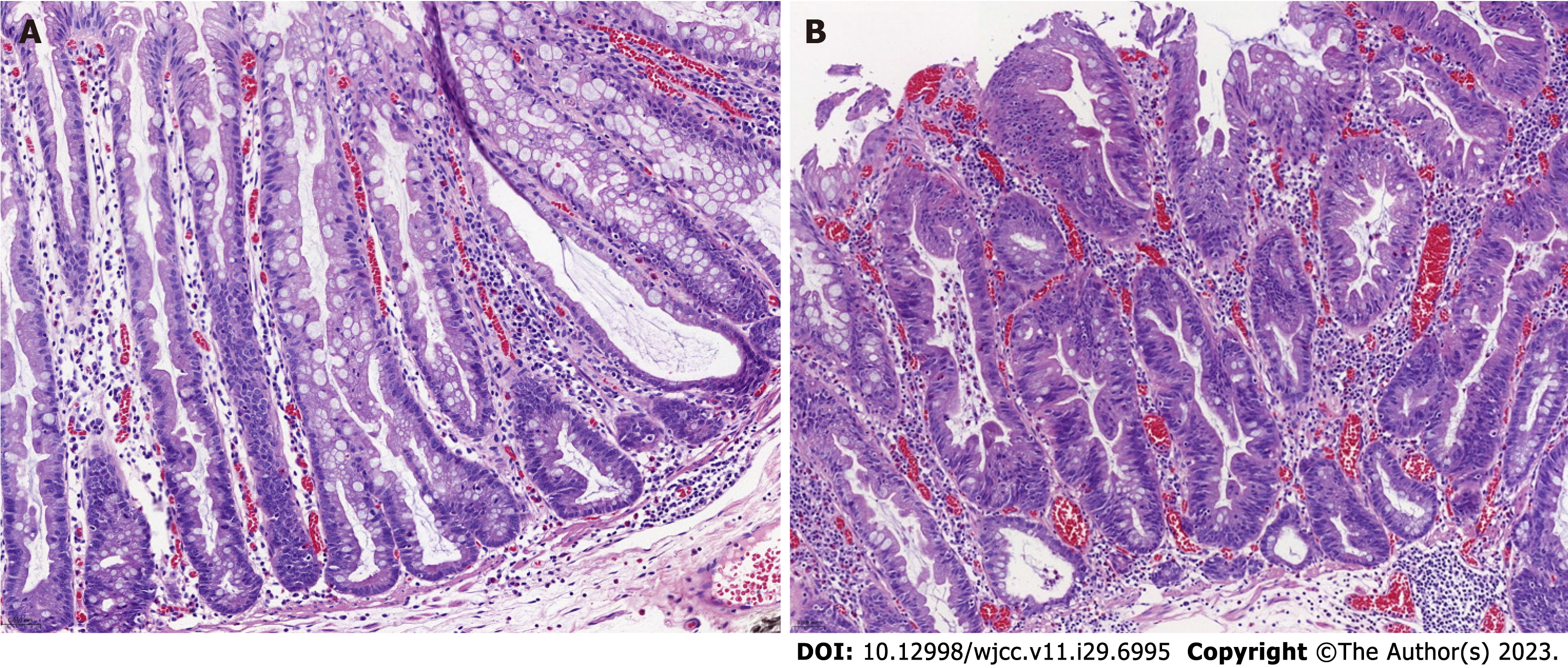Copyright
©The Author(s) 2023.
World J Clin Cases. Oct 16, 2023; 11(29): 6995-7003
Published online Oct 16, 2023. doi: 10.12998/wjcc.v11.i29.6995
Published online Oct 16, 2023. doi: 10.12998/wjcc.v11.i29.6995
Figure 2 Histopathological demonstration of colorectal the sessile serrated lesion and sessile serrated lesion-dysplasia (hematoxylin and eosin, objective magnifications 20 ×, 3DHISTECH).
A: The crypt has at least one of the following histologic features: (1) Horizontal growth along the mucosal muscle layer (L or inverted T-shaped crypt structure); (2) Expansion of the crypt base (basal 1/3 of the crypt base); (3) Jagged swelling of the crypt base; and (4) Asymmetric hyperplasia (proliferative band extending laterally from the base); B: Complex structural abnormalities, including: (1) Crypt elongation, crowding, complex branching, sieve-like structures, and villi-like structures; and (2) Cytologic abnormalities of diverse morphology, either with cuboidal cells, eosinophilic cytoplasm, vesicular nuclei, and prominent nucleoli, or with elongated cells, eosinophilic cytoplasm, deep-stained nuclei, and pseudostratified nuclei, with common nuclear schizophrenic signs.
- Citation: Wang RG, Ren YT, Jiang X, Wei L, Zhang XF, Liu H, Jiang B. Usefulness of analyzing endoscopic features in identifying the colorectal serrated sessile lesions with and without dysplasia. World J Clin Cases 2023; 11(29): 6995-7003
- URL: https://www.wjgnet.com/2307-8960/full/v11/i29/6995.htm
- DOI: https://dx.doi.org/10.12998/wjcc.v11.i29.6995









